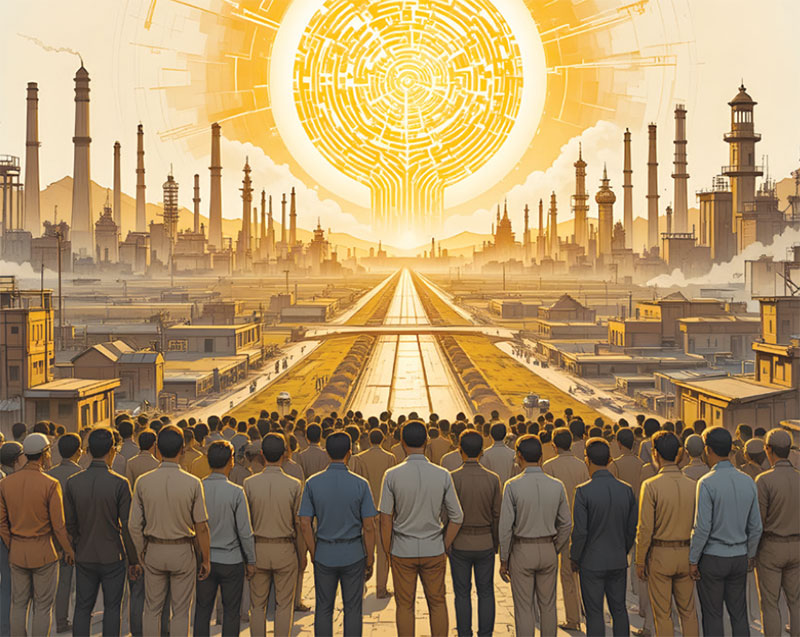Blitz Bureau
NEW DELHI: Few technologies have ignited as much debate as artificial intelligence (AI). From boardrooms to classrooms, the question echoes: Will AI destroy jobs or transform them? In India, where demographic trends promise a working-age population of nearly a billion by 2030, the answer is critical. The stakes are not just about technology adoption but about how India manages its economic future.
The fear is understandable. AI-enabled automation threatens routine and repetitive tasks across sectors. In manufacturing, predictive algorithms and robotic assembly lines can displace semi-skilled workers.
In services, chatbots are already replacing call-centre agents, and AI-powered tools can handle routine accounting, legal drafting, or even basic coding. For a country that has built its global reputation on the back of IT outsourcing and back-office services, these disruptions appear daunting.
But to stop at fear would be shortsighted. AI is not only about substitution — it is about augmentation. History offers perspective. Every major technological leap, from mechanisation to the internet, initially displaced jobs but eventually created more than it destroyed by birthing new industries and roles. The challenge, then, is not whether AI will transform jobs, but whether India’s workforce and policy framework are prepared for the transition.
There are already signs of transformation. AI is generating demand for data scientists, machine-learning engineers, cybersecurity specialists, and AI ethicists. These are high-value roles that India’s young, tech-savvy workforce is well placed to fill, provided the right skilling ecosystem is in place.
Nasscom estimates that India will need at least 1.5-2 million professionals with deep AI expertise by 2030, compared to fewer than 500,000 today. The gap is glaring, but also an opportunity.
Beyond the tech sector, AI promises to augment productivity in traditional industries. In agriculture, machine-learning models can forecast yields, detect pest infestations, and advise farmers on optimal sowing times.
In healthcare, AI is aiding diagnosis, managing patient data, and extending access in underserved areas. In logistics, AI-driven optimisation can cut costs and improve supply chains. Rather than eliminating jobs, these applications can empower workers, raising efficiency and income.
With right policy push & enablers, technology can transform economy
Policy, however, will be decisive. India cannot afford a laissez-faire approach. First, there must be massive investment in reskilling and upskilling. Public-private partnerships are essential to scale digital literacy, vocational AI training, and mid-career reskilling programmes.
Second, labour-market policies must be nimble, ensuring that gig and platform workers — who will increasingly form the backbone of the AI-enabled economy — are not left without social protections. Third, India needs a coherent AI strategy that encourages innovation while guarding against bias, data misuse, and job concentration in a handful of urban hubs.
The corporate sector has a role too. Leading Indian IT firms are already reskilling thousands of employees in AI tools rather than laying them off. If this model of transition — training over redundancy — can be scaled, it could soften disruption and keep India’s workforce relevant.
AI, then, is less a job destroyer than a job shaper. For India, with its vast reservoir of human capital, the transformation could be an inflection point, if managed wisely.



